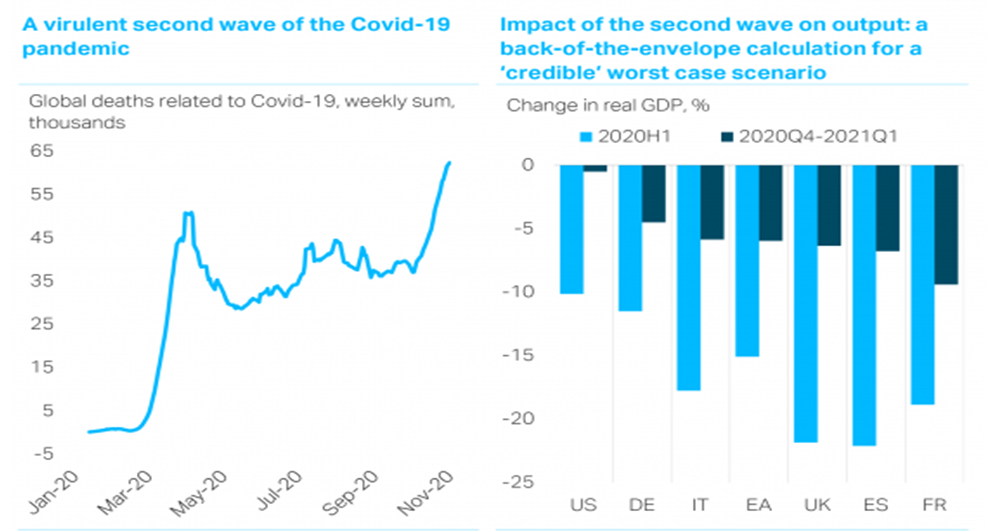A virulent second wave of the Covid-19 pandemic is underway. We do a back-of-the-envelope calculation to estimate relative declines in domestic demand in what we think is a ‘credible’ worst case scenario. We compare the extent of damage from the second wave in 2020 Q4 - 2021 Q1 to the loss in economic output in 2020 H1. Europe is hurt the most with GDP falling by 30%-50% of the decline in 2020 H1 while the US could stagnate. Estimates are based on information about current activity embedded in Google Mobility Reports relative to 2020 H1. Adjustments are made to account for the extent of the rebound in 2020 Q3 and expected restrictions. However, these calculations don’t account for the resilience of manufacturing and trade activity versus 2020 H1, a superior handling of the pandemic in north-east Asia, and the differences in policy responses in the two phases.
Hospitalisations are key drivers of new restrictions and of activity via voluntary social distancing. Hospitalisation rates follow the new cases with a lag. New cases are starting to top in Europe. France leads, as earlier and tougher restrictions stem contagion. But in the US a ‘third wave’ of infections is still in full swing and hospitalisations are increasing too.
The surge in US hospitalisations since mid-September is concentrated in states that were largely spared by the first wave in spring and didn’t experience a second wave in summer (the Dakotas, Nebraska, Montana, Illinois...). Mobility indices in states with higher hospitalisation rates are slowing more than those where hospitalisations are still under control (e.g. CA, NY). However, loose restrictions limit the slowdown in activity, for now.
The second wave forced European governments to dial up restrictions, but not all the way to April’s levels. Stringency indices suggest current measures in UK and Germany are looser than in June; France is the strictest. But orders to stay home, restaurant, public venues and shop closures are taking their toll on economic activity. Mobility for recreation is hurt the most; a slower return to the office limits the pullback in work-related mobility. Governments plan to reopen in time for the holiday season: will they live up to their promise to “save Christmas”?

 Client Login
Client Login Contact
Contact


